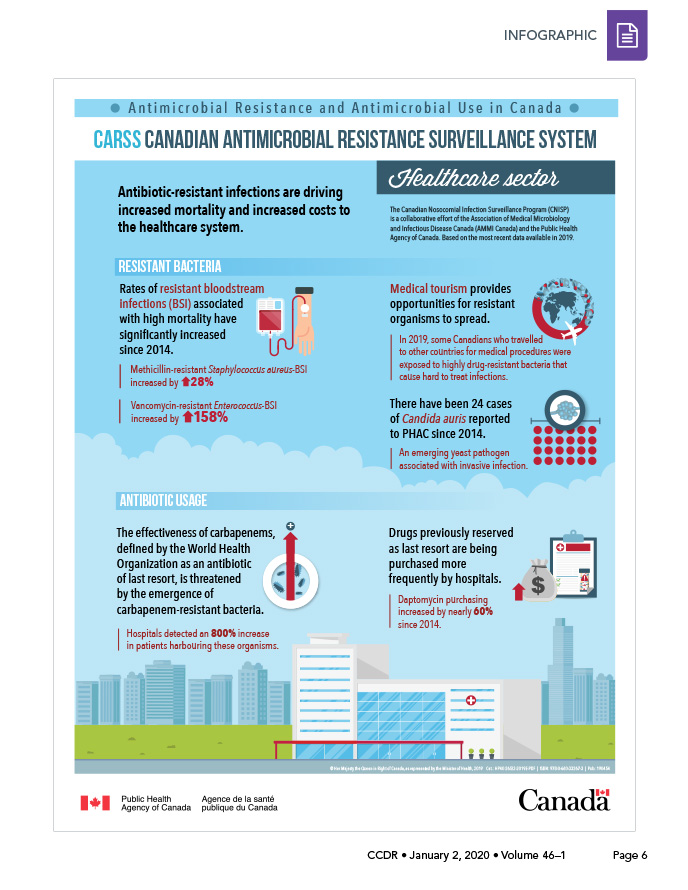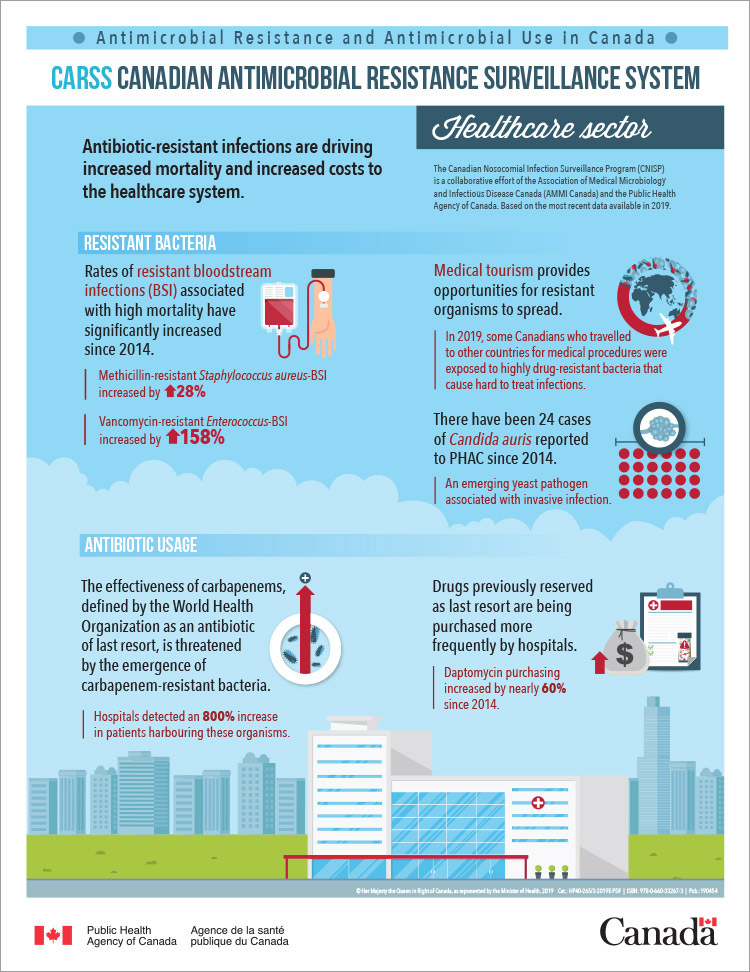AMR: Use in health care settings, Canada

 Download this article as a PDF
Download this article as a PDFPublished by: The Public Health Agency of Canada
Issue: Volume 46–1: Antimicrobial resistance (AMR)
Date published: January 2, 2020
ISSN: 1481-8531
Submit a manuscript
About CCDR
Browse
Volume 46–1, January 2, 2020: Antimicrobial resistance (AMR)
Infographic
Antimicrobial resistance and antimicrobial use in Canadian hospitals

Text description: Infographic
Healthcare Sector
Antibiotic resistant infections are driving increased mortality and increased costs to the healthcare system.
Rates of resistant bloodstream infections (BSI) associated with high mortality have significantly increased since 2014.
- Methicillin-resistant Staphylococcus aureus-BSI increased by 28%
- Vancomycin-resistant Enterococcus-BSI increased by 158%
Medical tourism provides opportunities for resistant organisms to spread.
- In 2019, some Canadians who travelled to other countries for medical procedures were exposed to highly drug-resistant bacteria that cause hard to treat infections
There have been 24 cases of Candida auris reported to PHAC since 2014.
- An emerging yeast pathogen associated with invasive infection
The effectiveness of carbapenems, defined by the World Health Organization as an antibiotic of last resort, is threatened by the emergence of carbapenem-resistant bacteria.
- Hospitals detected an 800% increase in patients harbouring these organisms
Drugs previously reserved as last resort are being purchased more frequently by hospitals.
- Daptomycin purchasing increased by nearly 60% since 2014
The Canadian Nosocomial Infection Surveillance Program (CNISP) is a collaborative effort of the Association of Medical Microbiology and Infectious Disease Canada (AMMI Canada) and the Public Health Agency of Canada. Based on the most recent data available in 2019.
